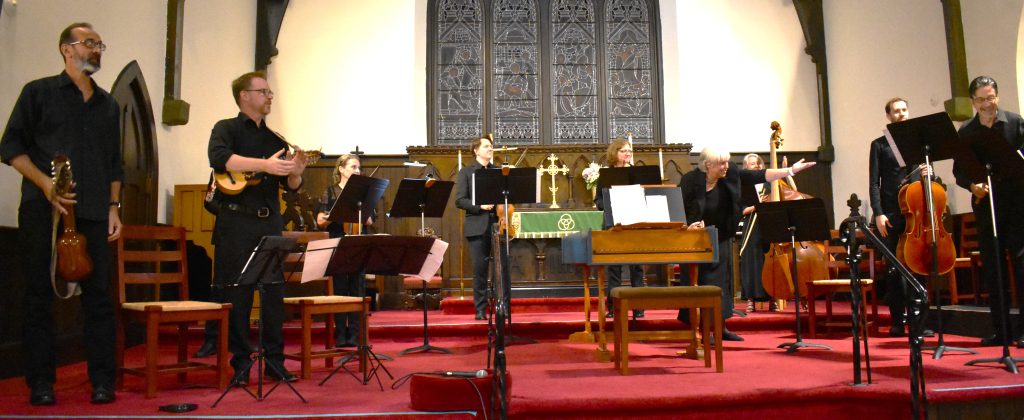
This Crescendo concert at Trinity Church in Lime Rock Church was an all-Vivaldi concert with a special twist at the end.
Antonio Vivaldi’s Flute Concerto No. 2 in G Minor, RV439, nicknamed “La Notte” (The Night) remains a fabulous flute piece. The Presto Fantasmi provides an anthology of night noise beginning with twilight, then the final bird calls, then wishing trees, unidentified animal scampering sounds, and night noises that children might identify as ghosts. The following calm and poetic Presto describes the serenity of a starlight sky with a rising full moon. Largo, labeled Il Sonno (Those Dreams), invites the fiction of nighttime hunting amid windy weather.
The concluding Allegro delivers a comedy of pre-dawn blue light where insects and birds begin their early daily activities. This remains one of the great early program pieces to delight an audience if an ensemble has a magic flute player, here Rodrigo Tarraza, to make it work. In this case, the superior keyboard player Christine Gevert, on console organ, assisted the flute player with a subtle melodic flare that contributed marvelously to a poetic ambiance.
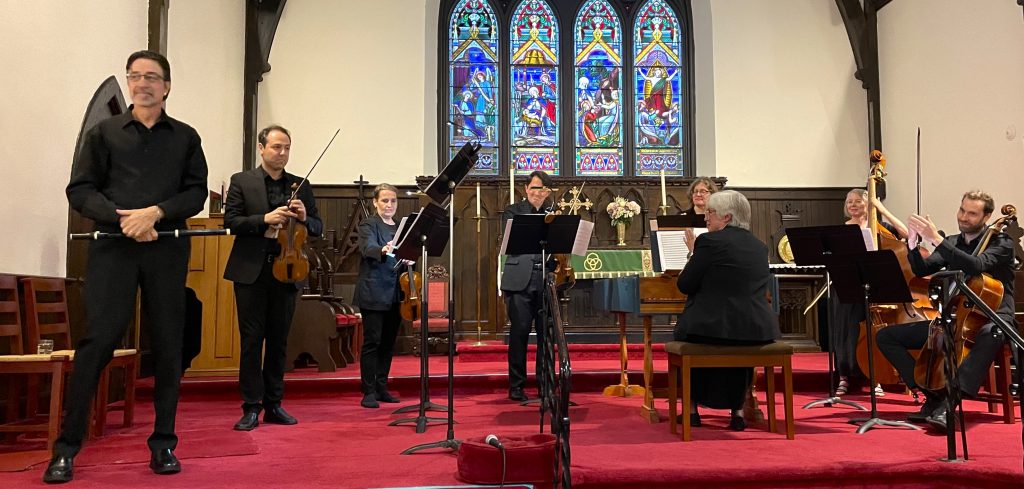
Violin Concerto La Tempesta di Mare (The Storm at Sea) in E-flat Major, RV 253, Op. 8 (also exists as a flute concerto, RV 433) describes the various rhythms of a boat at sea. It opens with a rhythmic bouncing motif, then transitions to a dangerous storm, then the calm water after the tempest, then windy sea moments with bouncing, lapping seawater, and finally an even keel run into a safe harbor with its mission accomplished. Concertmaster Edson Schied on violin delivered an astonishing range of emotional states of mind to make the audience feel that they had enjoyed a ride to a mythic destination.
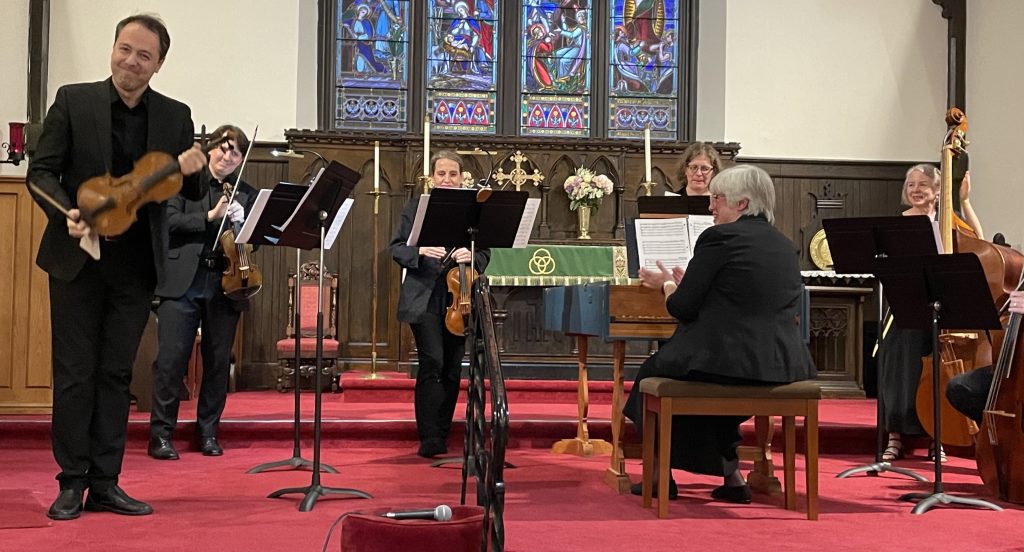
Flute Concerto in D major, Il Gardellino (The Goldfinch) in D Major, RV 428 pits the goldfinch (played with gusto by flutist Rodrigo Tarraza) against a choir of birds: violins, viola, and bass) defeating them all into silence whenever these birds challenge the goldfinch’s reputation to sing. The last challenger, the owl (violoncello fiercely played by Serafim Smigelskiy) contends with greater authority and perhaps proverbial wisdom, yet the charming joy of the champion goldfinch delivers the lovely laurel with happy, cheerful conclusion.
Violin Concerto in D Major, RV 229, dedicated to Anna Maria (we don’t know who she was) offers an interesting dynamic. My interpretation is that the first Allegro (with many exciting 1/16th notes) is written from the point of view of a man who has fallen in love with a woman. Passion and excitement are palpable. The succeeding Andante is from the woman’s point of view; she queries and demands answers from the suitor as in a rigorous interview. An amusing scene has staccato notes and some comic-slurred sixteenth notes answering the question of sobriety and mocking drunkenness. No, the suitor is not drunk! At the end of the Andante, the lady (violin) asks a series of questions to which the man (cello) answers with a single low note on the cello (Yes!).
The Allegro conclusion proffers a celebration of their mutual agreement and consent for their forthcoming wedding. While there are repeating motifs, they are varied by the violin playing in quarter notes, 1/8th notes, and 1/16th notes. The last Allegro movement celebrates the happy conclusion with 3/8th notes without divulging who will be dominant in the marriage, but one may take the inference that the talented lady who inspired this work will be the dominant figure in the marriage….
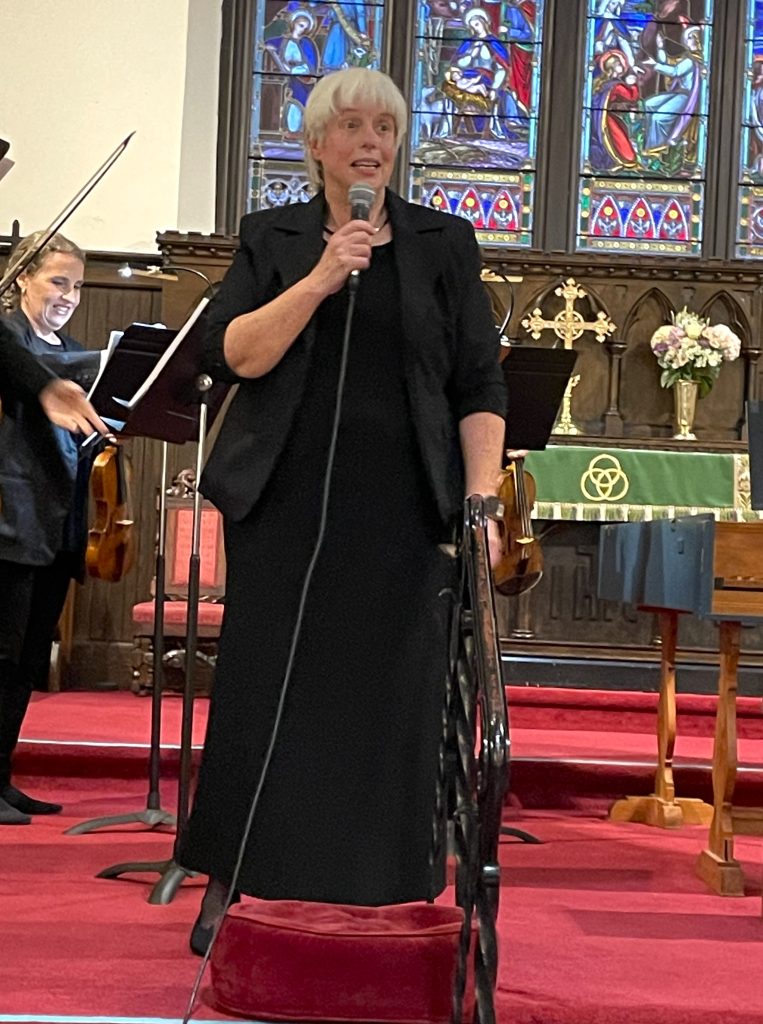
Concerto for Two Mandolins in G Major, RV 532 provided a most exciting conclusion. Instead of two mandolins, this work was performed with two Andean charango instruments. There is historical precedence for this innovation since much of Vivaldi’s music is program music which was popular in South American communities. While the Jesuits brought Vivaldi’s music to South America, South American culture had enjoyed program music for about a thousand years before Vivaldi’s program music arrived there, so its popularity was a natural appropriation under colonial conditions when it was strictly banned. When Spanish soldiers eliminated the Jesuits, they went on to conquer all native speakers, yet the priority in battle was to eliminate all native musicians before any battle. Later repressive dictators would ban local ethnic music and even native instruments like the ten-stringed charango and other native instruments.
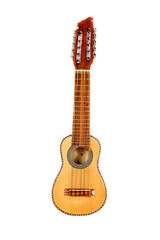
Carlos Boltes and Scott Hill (both from Chile) played the charango with such intense passion and finger-flicking nail-picks that they were amazing! (The development of the pic in Europe did not arrive until the nineteenth century, so mandolins were not played with pics.) The finger-flying hand of Boltes dominated all other instruments in this showpiece, the charango being the smallest instrument after the flute in this chamber orchestra in a final to savor and remember! Like the small goldfinch, the charango out-sang the orchestra!
